The suppression of the toxicologists is among a series of deceptions by the OPCW leadership to corrupt the Douma probe's scientific process, as detailed in this new multi-part investigation by The Grayzone. More than three years later, the high-level campaign of censorship and muzzling has mired the world's top chemical weapons watchdog in scandal.
The manipulation began when the OPCW's Fact-Finding Mission (FFM) produced a 115-page report in June 2018. The report found no evidence of a chemical weapons attack in Douma. This undermined the stated pretext for US-led air strikes on Syria two months prior, and raised the possibility that insurgents had staged the April 7, 2018 incident to frame the Syrian government.
But as leaked documents later revealed, this original report was kept from the public. Instead, senior OPCW officials tried to rush out a replacement, doctored version that falsely claimed evidence of chemical weapons use. The original report's chief author, Dr. Brendan Whelan, thwarted the release of the bogus substitute only after discovering it at the last minute and sending an email of protest.
Whelan's successful June 22nd intervention proved to be one of his last. In the following months, a tense standoff ensued between OPCW team members who wanted to follow the facts, and senior officials determined to reinforce the US-led narrative that a chlorine attack had occurred. A delegation of US representatives was brought in to lobby the inspectors. The original team that deployed to Douma was usurped by officials who never set foot there. And Whelan was effectively sidelined until his scheduled departure from the organization in September 2018.
When the OPCW released its final report on the Douma incident in March 2019, the science lost. Contradicting the original report, the final report now claimed that there were "reasonable grounds" to believe that a chemical attack occurred in Douma, and that "the toxic chemical was likely molecular chlorine."
The US, which had bombed Syria in April 2018 along with the UK and France, claimed vindication. A State Department spokesperson said:
"The conclusions in the FFM report support what the United States determined in our assessment of the attack last April - that the regime is responsible for this heinous chemical weapons attack that killed and injured civilians."Although the final report of March 2019 purported to be the OPCW's verdict, a trove of leaked internal documents and emails has since surfaced, at Wikileaks and The Grayzone, that undermine the US-led narrative.
Drawing on these published documents, OPCW sources, and previously undisclosed leaks, this multi-part investigation by The Grayzone uncovers the OPCW leadership's extensive and systematic effort to manipulate the science.
This installment details how senior OPCW officials censored the conclusions of expert toxicologists who ruled out chlorine gas as the cause of death in Douma. The OPCW not only suppressed the toxicologists' findings but concealed the fact that they were ever consulted.
In a previously unreported incident, the OPCW also targeted Whelan for trying to raise alarm about this act of subterfuge. In August 2019, Whelan reached out to colleagues who were aware of the censored toxicologists' conclusions. But instead of eliciting support to question the suppression, Whelan found himself the subject of an OPCW probe.
By erasing and blocking the findings of leading specialists — and investigating Whelan for voicing concern in response — the OPCW leadership ensured that an organization committed to "a world free of chemical weapons" would in fact become, in its high-stakes Douma probe, free of world-leading chemical weapons expertise.
How the OPCW concealed an inconvenient conclusion
How the 40 plus victims died in Douma on April 7 2018, has been one of the most contested and controversial aspects of the OPCW's investigation. It is also where the most blatant suppression of evidence and scientific deception took place.
In video footage supplied by insurgent-tied groups, the Douma victims were filmed in piles strewn across an apartment building referred to by the OPCW as "Location 2." Many had profuse frothing from the nose and mouth, and numerous victims showed discoloration of the skin around their eyes. A gas cylinder could be seen above a crater on the roof.
In the immediate aftermath, two toxic chemicals were suspected: sarin, a deadly nerve agent; and chlorine gas, a much less, but still toxic chemical widely used in industry and water treatment plants.
Outside experts, however, quickly rejected the likelihood of chlorine. On April 10th, toxicologist and Professor Alastair Hay OBE, then-member of the OPCW's Education and Outreach board and recipient of its Hague Award, dismissed the notion that victims could have been poisoned by chlorine gas. The victims' symptoms, Hay told the Washington Post, were
"much, much more consistent with nerve-agent-type exposure. It's just bodies piled up...There's a young child with foam at the nose and a boy with foam on its [sic] mouth. Chlorine victims usually manage to get out to somewhere they can get treatment. But in Douma, the victims have pretty much died where they were when they inhaled the agent. They've just dropped dead."Other experts interviewed by the Post agreed with Hay's analysis, concluding that "the speed with which the victims died suggested that a nerve agent was used," as "chlorine usually takes longer to work." To date, there are no recognized chemical weapons experts who have gone on record to state that the Douma victims' rapid, and in some reported cases immediate onset, of profuse frothing is consistent with chlorine gas exposure.
On the ground in Douma, the OPCW team collected dozens of samples at the scene of the alleged attacks. If a nerve agent had indeed been used, then these samples would likely detect it. But on May 22nd, two weeks after their return to headquarters at the Hague, the inspectors received some puzzling results.
The OPCW's Designated Labs that were contracted for analysis found no evidence of nerve agents in either environmental or biological samples. The labs only reported finding traces of innocuous chemicals known as chlorinated organic compounds (COCs). The COCs' presence left open the possibility that the samples might have been in contact with something as deadly as chlorine gas, or as benign as household bleach. (Here, too, the science became highly contested, as this series will address in a follow-up article).
Regardless of whether there was evidence of chlorine gas or not, the finding that no nerve agents were present raised an obvious conflict.
Like Professor Hay, the OPCW inspectors knew that rapid or immediate onset of profuse frothing from the mouth and nose was a classic sign of nerve agent exposure. It was most certainly not consistent with chlorine poisoning — if indeed there had been any chlorine release at Location 2, which was still not a given.
The ramifications were huge. The disconnect between the victims' signs of nerve agent poisoning on the one hand, and the absence of nerve agents in samples, on the other, immediately called into question the possibility that a chemical attack had occurred.
It was a call too large for the inspectors to make. Experts were needed to resolve the discrepancy and provide a definitive evaluation.
A mission to Germany
In early June 2018, four OPCW officials flew to Germany to meet with toxicologists/pharmacologists, all recognized world experts in chemical weapons poisoning. The trip was approved at the highest levels through a Mission Warning Order. The delegation consisted of Dr. Brendan Whelan and Dr. Sami Barrek, both senior members of the Douma investigation team; Dr. Marc Blum, the Head of OPCW Laboratory; and Dr. Soumik Paul, the Head OPCW Health and Safety Branch.
The German experts were shown numerous photos and videos of the victims, and were informed of what alleged witnesses had described to the inspectors. Some alleged witness had claimed rapid, even immediate onset of severe frothing from exposure to a toxic chemical (Original Report para 7.82). As the final report recounted, "Casualties began arriving [at the hospital known as Location 1] shortly after 19:00 with excess salivation or foaming from the mouth." (para 8.56). The alleged attack took place at about 19:00 (para 8.58).
Within an hour, the toxicologists easily confirmed what the OPCW team and other experts had already suspected - that such a rapid onset of profuse frothing was incompatible with chlorine exposure. According to leaked minutes from that meeting, previously published by Wikileaks:
...the experts [toxicologists] were conclusive in their statements that there was no correlation between symptoms and chlorine exposure. In particular, they stated that the onset of excessive frothing, as a result of pulmonary edema, observed in photos and reported by witnesses would not occur in the short time period between the reported occurrence of the alleged incident and the time the videos were recorded (approx. 3-4 hours).Immediately after their consultations with the toxicologists, the OPCW officials met and agreed that "the key 'take-away message' from the meeting was that the symptoms observed were inconsistent with exposure to chlorine."
The experts were also of the opinion that it was highly unlikely that victims would have gathered in piles at the centre of the respective apartments at such a short distance from an escape from the toxic chlorine gas to cleaner air.
The evidence was now overwhelming that the more than 40 victims filmed at Location 2 had not been killed by either nerve agents or chlorine gas. But the Douma samples turned up no other toxic chemicals that could have caused the rapid frothing. Was it possible that the highly toxic offending chemical had not been picked up in the samples? The OPCW team and the German toxicologists discussed this possibility, but found it unlikely. The minutes of the meeting stated:
"The experts tried to consider what other known toxic chemical might be consistent with the symptoms observed and their rapid onset", but "no other obvious candidate chemical could be identified."Upon returning to The Hague, the inspectors added the toxicologists' input to their 115-page report.
"The rapid, and in some reported cases, immediate onset of frothing described by victims is not considered consistent with exposure to chlorine-based choking or blood agents," the original report said. "The opinion of a number of toxicologists, specialists in chemical-weapons-related intoxication supported this assessment."The toxicologist assessment left a disturbing unanswered question. If the profuse frothing from the victims' mouths and noses was not a result of poisoning by nerve agents (because none were found in the samples); chlorine; or any other identifiable chemical — what then caused the heavy foam-like secretions?
The original team report tried to address this question by noting an integral element of epidemiological studies. To establish a possible connection between chemical weapons use and the deaths of the victims, the report said, "there must not be any likely alternative explanation for the symptoms." (para 7.71) This same criterion was later included in the final report (para 8.70) but with no attempt to consider alternative scenarios. In the original report, however, the inspectors did follow proper scientific inquiry and considered what else could have killed the victims and caused the symptoms, if it were not nerve agents or chlorine.
When the original report was being finalized, there were still dozens of samples remaining to be analyzed. Accordingly, the inspectors left it open that further analysis could in theory turn up new evidence and hypothesized that:
a. The victims were exposed to another highly toxic chemical agent that gave rise to the symptoms observed and has so far gone undetected.Given that the inspectors had no explanation for the symptoms displayed by the victims, and failing to identify the elusive highly toxic chemical, it was now also reasonable to consider that the victims did not perish from chemical poisoning. So, the inspectors offered a second hypothesis:
b. The fatalities resulted from a non-chemical-related incident.The inspectors knew that such a hypothesis would be controversial, as it hinted at the possibility of a staged incident in Douma. They were circumspect in their claims, however, and stressed that the investigation would need to continue to gather evidence to support one or the other hypothesis.
"The team has insufficient evidence at this time to be able to formulate an authoritative conclusion in either regard. To this end, the investigation remains on-going," the report said.
This passage — with its mention of the toxicologists' assessment and a hypothesis leaving open the possibility of a staged incident — was never published by the OPCW. And the team would never get the chance to continue this critical area of investigation.
Erasing the experts
By the time the final report was published in March 2019, Dr. Brendan Whelan had left the organization seven months prior. In that period, senior OPCW officials buried the original report's key findings — including those of the toxicologists.
The final report made no mention of the German toxicologists' clear and unequivocal conclusions ruling out chlorine as the cause of death in Douma. There could only be one reason: if the report was going to declare that there were "reasonable grounds" to believe chlorine was used as a chemical weapon, the inconvenient toxicology assessment from the Germans had to go — along with any mention of the meeting itself. In its detailed timeline of the OPCW mission, the final report omits the team's visit to Germany in June 2018.Instead, the report states:
"The FFM consulted with four toxicologists and one toxicologist and medical doctor, all versed in chemical weapons or toxic industrial chemical exposure."The timeline states that this happened in September and October 2018, clearly not referring to the German toxicologists.
As for what these replacement toxicologists concluded, the final report does not say. But we can surmise that they — just like the now-omitted German experts - did not find the deaths consistent with chlorine gas exposure. Otherwise, the report would have said so. It instead vaguely concedes that:
"It is not currently possible to precisely link the cause of the signs and symptoms to a specific chemical."This crafty choice of words let the OPCW off the hook for having to issue a judgment on whether chlorine gas could have been a cause of the Douma victims' symptoms - while simultaneously allowing it to later make the incoherent conclusion that chlorine gas was the weapon "likely" used. With this sleight of hand, the OPCW was hiding the inconvenient, now-deleted original toxicologists' unequivocal conclusion that "symptoms observed were inconsistent with exposure to chlorine."
When veteran inspector flagged censorship, OPCW investigated him
The final Douma report was an affront to scientific integrity and particularly to those OPCW scientists who had fought to defend it. For Dr. Whelan, it was not the end of the matter.
In an August 2019 email, detailed here for the first time, Whelan wrote to two OPCW officials who had accompanied him to Germany for the toxicology assessment. Whelan asked the pair if they would be willing to join him in raising concern about the suppression of the toxicologists' critical findings with the Organization's Director General, Fernando Arias.
"I would like to know your opinions on this potentially serious irregularity and, given the information all three of us are privy to, whether you are willing to jointly raise the issue with the DG," Whelan wrote to his now former colleagues. (Whelan had left the OPCW at the scheduled end of his tenure in September 2018).
When the original toxicology assessment had been done in June 2018, Arias had not yet taken the helm. Neither was he there, later that month, for the suppression of the original report containing the inconvenient assessment. Whelan was concerned that the new Director General was either not aware of this key omission from the final report, or didn't grasp its significance.
Months earlier, in an April 2019 letter previously published by The Grayzone, Whelan had raised his concerns with Arias. But the DG's indifferent response, Whelan told his colleagues in the August email, left him worried that close aides were insulating Arias from the inconvenient facts.
"I have written to the Director General informing him of my concerns. Though I received a response from him, it was an entirely unsatisfactory one. I get the impression, however, that the DG himself may be getting an unbalanced account from sources that would prefer such inconsistencies or irregularities not be highlighted."In any case, Whelan sought a reasonable explanation for the omission of the toxicology assessment — even being open to the possibility that there might be one.
"I believe it is our professional and moral obligation to ensure the DG appreciates the gravity of the matter. There may be a justified reason for the omission - though I can't imagine what. At a minimum a satisfactory explanation has to be provided."But the OPCW was not interested in explanations. Instead, Whelan's correspondence soon got into the hands of two external investigators from the UK and US, two nations with a vested interest in preserving the chemical attack narrative around Douma. The investigators had been appointed to investigate the very first leak in the Douma scandal, an engineering assessment by another OPCW veteran, Ian Henderson.
Whelan's email to his colleagues — intended to alert the Director General of possible fraud — was instead used as a pretext to instigate a formal "independent" OPCW inquiry against him as part of that probe into the leaked engineering report. The inquiry's report ultimately characterized Whelan's email of concern about scientific censorship as a cynical crusade against the OPCW. The report said:
"As late as August 2019, [Whelan] contacted members of the Organisation to attempt to convince them to join his campaign to challenge the final Douma report."Even the private letter Whelan sent to the Director General the previous April was also depicted as a sinister act of subversion. "This included a letter to the Director-General, challenging the findings in the final Douma report," the investigators wrote.
The Grayzone sent detailed questions about the omission of the toxicologists' assessment to one of the OPCW officials who attended the June 2018 meeting in Germany and received Whelan's August 2019 email. The official, who is no longer with the OPCW, did not respond.
The outcome of the OPCW's high-profile investigation against Whelan and Henderson was presented to Ambassadors from member states who were summoned to the OPCW for what the British journalist Peter Hitchens called "The Show Trial of A and B., Kafka comes to the Hague."
The Director General condemned the inspectors as
"individuals who could not accept that their views were not backed by evidence. When their view could not gain traction, they took matters into their own hands and committed a breach of their obligations to the Organisation." Western media outlets like The Guardian were quick to publish the Director's derisive words and pitch the outcome as a "blow to Russian denials of Syria chemical attack."As a result of Whelan's attempt to flag fraudulent conduct, Arias then formally banned him from ever working again with the OPCW, even as a consultant. In practice, this punishment was tantamount to a life ban from any UN body.
Arias was sending a clear message to any would-be dissenters. And in public appearances, he has continued to send a message that chemical weapons expertise, when it comes to Douma, is not welcome within his walls.
Speaking before the European Parliament in April, and at the United Nations Security Council in June, the Director General was asked about the exclusion of the toxicologists' findings from the final report. In his remarks, Arias spent ample time offering false excuses about why he has refused to address the Douma probe's alleged scientific fraud and attacking the dissenting inspectors, as The Grayzone has previously reported.
But when it came to the missing toxicologists, Arias avoided the issue entirely.
About the Author:
Aaron Maté is a journalist and producer. He hosts Pushback with Aaron Maté on The Grayzone. In 2019, Maté was awarded the Izzy Award (named after I.F. Stone) for outstanding achievement in independent media for his coverage of Russiagate in The Nation magazine. Previously, he was a host/producer for The Real News and Democracy Now!
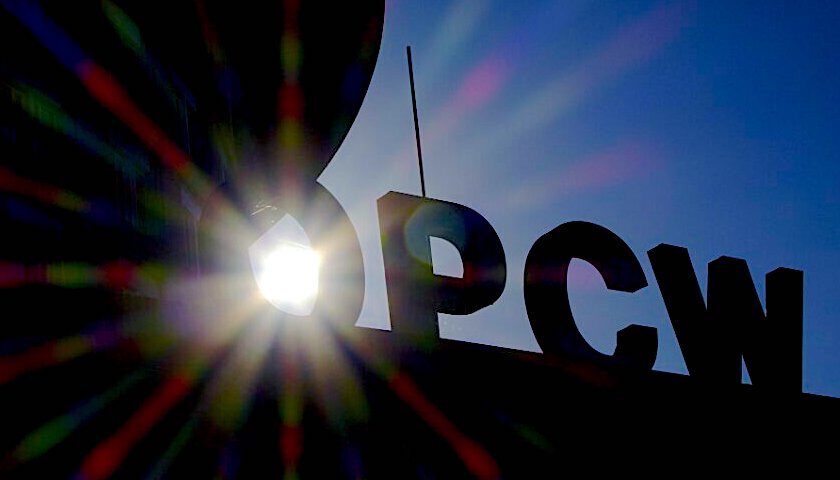
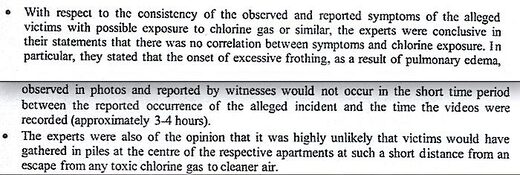

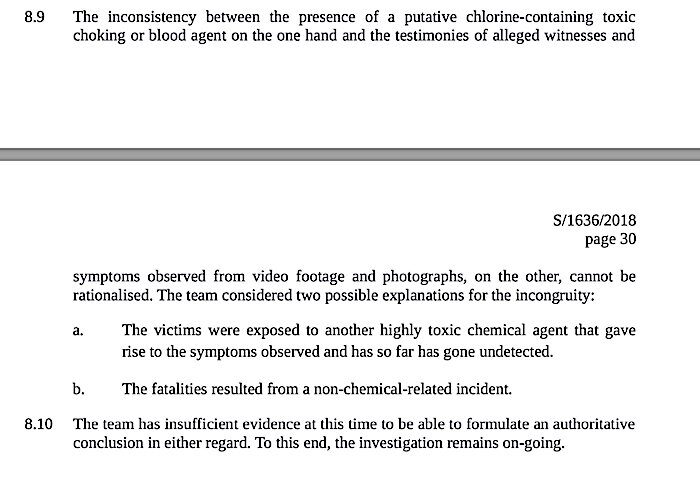

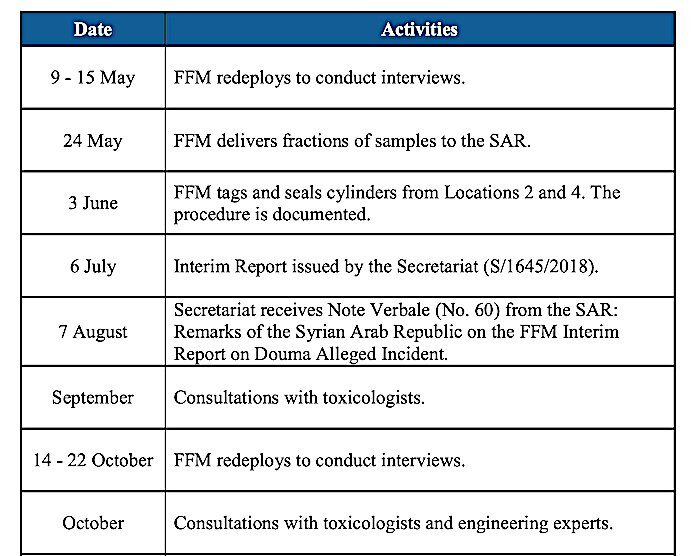
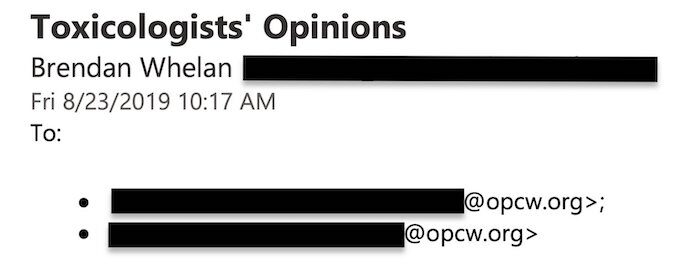
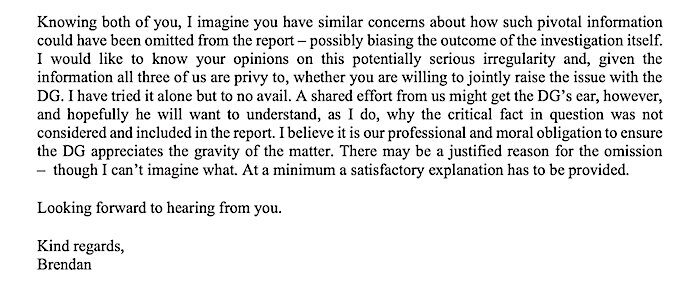



Reader Comments